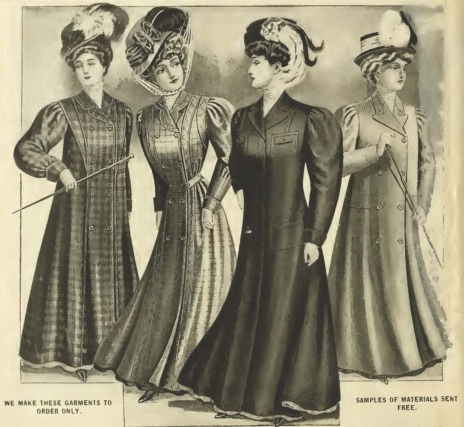Are businessmen from Mars and businesswomen from Venus? An analysis of female business success and failure in Victorian and Edwardian England
by Jennifer Aston (Oxford University) and Paulo di Martino (University of Birmingham)
The full paper, ‘Risk, success, and failure: female entrepreneurship in late Victorian and Edwardian England’ has been published in the Economic History Review.

Do women and men trade in different ways? If so, why? And are men more or less successful than women? These are very important questions not just, or not only, for the academic debate, but also for the policy implications that might emerge, especially in countries such as the UK where, rightly or wrongly, we believe in personal entrepreneurship as one of the main antidotes to unemployment and to the crisis of big business.
In economic history, it has traditionally been argued that women and men traded in similar ways up to the industrial revolution but, since then, women have ben progressively relegated to a “separate sphere” allowed, at most, some engagement with naturally “female” occupations such as textiles or food provision. Although more recent literature has strongly undermined this view, a lot of ground has still to be covered, especially about the period post 1850s.
We approach this debate by starting with a simple question about business “success” across gender: did women happen to fail more likely than men? Thanks to the reconstruction of original data on personal bankruptcy derived from contemporary official publications by the Board of Trade, this research suggests that this was not the case. In fact, depending on how prudently data on the number of female entrepreneurs are looked at, women appear more successful in, at least, keeping their businesses alive.
This finding, however, only paved the way for more questions. In particular, had the narrative of women only dealing with traditional and safe industries and operating in semi-informal businesses been true, what we observe via the lens of official statistics would be just a distorted view. This researched focussed on other primary sources: the reports of about 100 women whose businesses failed around the turn of the century. The findings support the initial hypothesis: although smaller than male counterparts (hence, in fact, riskier), female businesses were not hidden away from the public sphere, the official trading places, or the rules of the formal credit market. So, boarding house keeper Eleanor Bosito and the hotelier Esther Brandon were declared bankrupt and subject to formal proceedings despite having very few creditors who all lived within five miles from the businesses of the two women. with unsecured debts of about £160 faced bankruptcy as a result of the petition filed by Jane Davis, a widow who lived less than half a mile from Agnes’s home and had lent her the sum of £5. This was the same destiny faced by Elizabeth Goodchild a businesswoman who, contrary to the other cases, operated on a large scale with suppliers and clients from all around Britain and Europe. This evidence reveals that, first of all, small scale trade was thus not necessarily the rule for women and, even when it was the case, it did not coincide with informality or sheltering from the “rules of the game”.
Businesswomen then did not come from, nor traded on, a different planet and certainly did not need the patronising protection of a male-dominated institutional environment. Instead the legal system forged ad hoc rules for married woman, via specific provisions in Bankruptcy Laws which lifted them from any responsibility. These level of defence, similar only to the one available to lunatics and children, proved ineffective. Or, in fact, the perfect background for frauds: in 1899 a spinster who was due to be declared bankrupt got married before the actual beginning of the procedure, thus avoiding any legal consequence (and, hopefully, having found love too).
In conclusion, this research indicates that Victorian and Edwardian businesswomen were perfectly able to trade in a fashion similar to the one of their male counterpart and, if anything, they were more successful. This leads to a basic and probably intuitive policy implication: if we want more women to successfully engage in business, all we have to do is to remove the economic, social, and cultural barriers that limit their access to opportunities.

